
“I am tired of hiding, tired of misspent and knotted energies, tired of the hypocrisy, and tired of acting as though I have something to hide.”
– Kay Redfield Jamison
Cinema of all ages has always been interested in mad characters and the portrayal of insanity. We fear madness, but at the same time its cinematic manifestation often brings to life some of the most charismatic and memorable movie characters, like the Joker from the Batman series, Jack Torrance from “The Shining”, Norman Bates from “Psycho”, and many others.
But the spectator has to notice that this entertaining madness is usually just the fictionalization of a true mental condition, a generic “craziness” that in most cases can’t be even identified in medical terms. However, there are movies that, we should say, would make any psychiatrist proud.
We’re talking about those movies that manage to show on the screen a realistic portrayal of people suffering from true, recognizable mental disorders. Sometimes this realism is based on the director’s will, other times it turns out to be involuntary.
The following list will present 15 movies that, consciously or not, accurately portray mental illnesses. For the purpose of this list, the DSM-5 (Diagnostic and Statistical Manual of Mental Disorders, 5th edition published by the American Psychiatric Association) was used as a bibliographic resource for the proper classification of the disorders shown in the mentioned movies.
1. The Three Faces of Eve (1957)
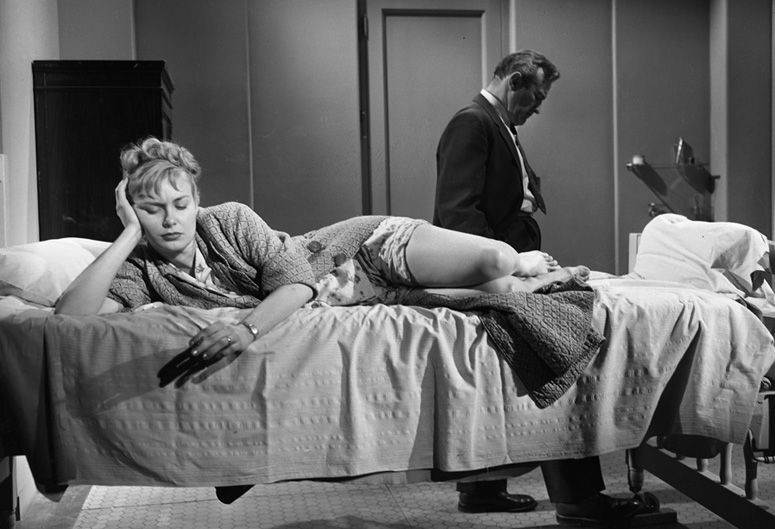
In the 1950s, two American psychiatrists, Corbett H. Thigpen and Hervey M. Cleckley, had the chance to treat a female patient suffering from one of the rarest psychopathologies, almost treated as a myth because of its unique occurrence. The diagnosis they made is that of dissociative identity disorder (formerly known as multiple personality disorder).
The two doctors wrote a book about the case and in 1957 the movie “The Three Faces of Eve” was made, inspired by the true story of a peculiar patient, Chris Costner Sizemore, a woman who hosted inside her mind a number of different personalities.
The movie shows us three of her many personas. One is Eve White, a shy and submissive woman suffering from occasional blackouts; during those, Eve Black takes control of her body, a free-spirited and lustful personality. The perfect balance between these opposite “faces” of Eve’s is Jane, the third identity and the last to reveal itself to the psychiatrists, the one that eventually survives.
Certainly the cinematic portrayal of this condition may seem at some point too exaggerated and almost surreal. For example, it’s hardly believable that the doctors can summon each separate Eve at will, by simply calling their respective names. But the story behind this work of fiction is true and kept in medical records.
Dissociative disorders are quite rare and their rarity may be the cause of misdiagnosis. This is also shown in the movie; during one of the first visits, the two specialists seem to believe that the patient is faking her condition to fool her own husband for her own good.
2. Red Desert (1964)
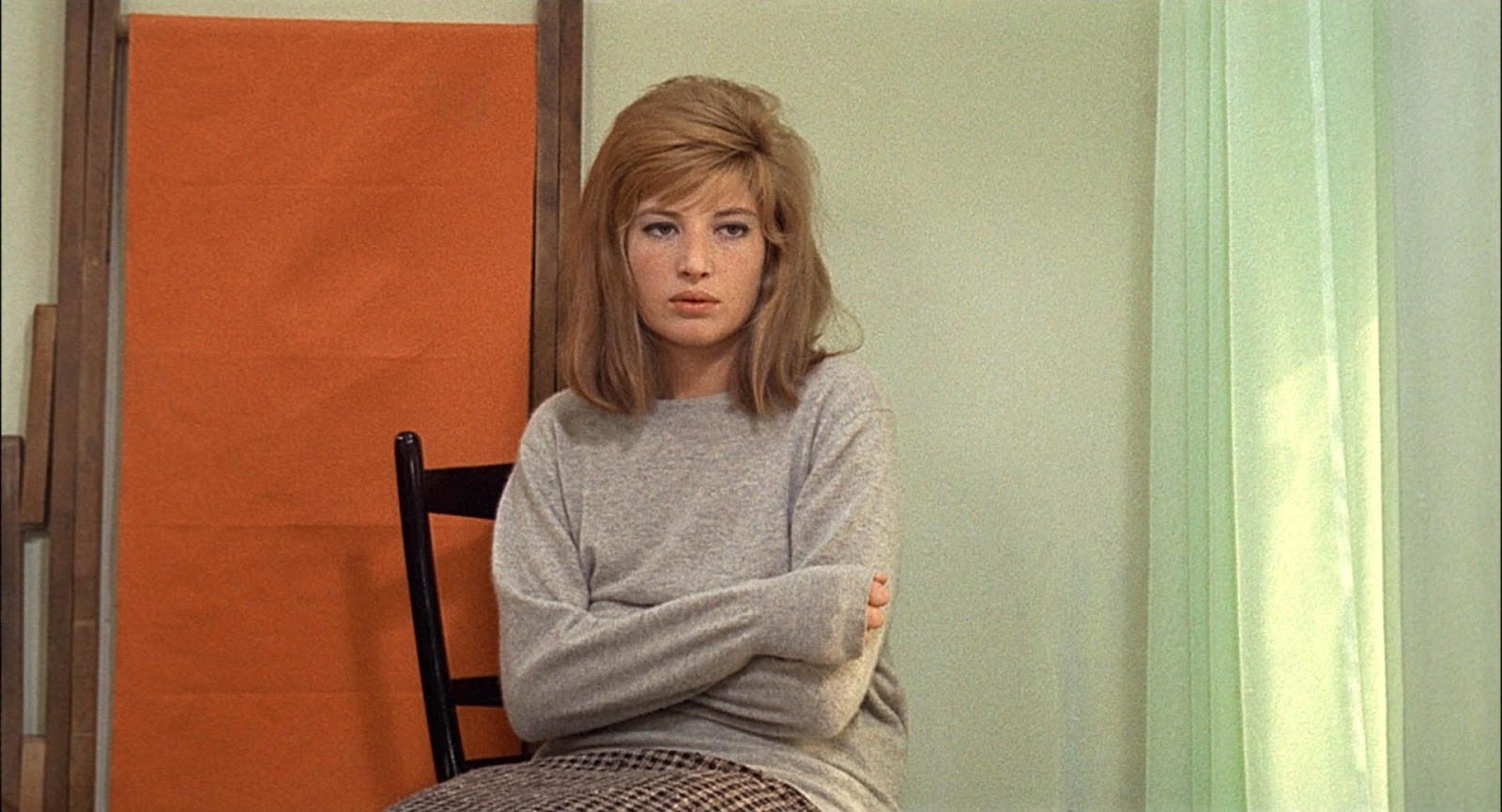
Director Michelangelo Antonioni dedicated a series of movies (between the 50s and the 60s) to incommunicability between individuals and what the critics called the “aridity of feelings”, that Antonioni believes is a characterizing trait of contemporary society. “Red Desert” is the last movie focused on this topic and the only one made with Technicolor.
As in most of Antonioni’s early works, the plot is so basic that it doesn’t need to be explained: the director only cares about the interactions between characters (and with characters and their surroundings), and he is therefore careless about events.
The movie focuses on Giuliana (played by Antonioni’s muse, Monica Vitti), a married woman who is struggling to live after making a suicide attempt. She seems to want to be detached by the surrounding reality and environment, which she alone feels is dehumanizing; most of the movie is shot in heavily industrialized locations, characterized by the presence of poisonous fumes and metallic structures that seems to cause in Giuliana repulsion and fear.
While the intentions of the director are clearly more complex, as the movie’s purpose is to share his vision about the contemporary withering of feelings (especially inside the bourgeois contest), Monica Vitti’s dreary portrayal of Giuliana is a credible example of a clinically depressed person.
The woman tried to kill herself and lives in a state of severe sadness; she also admits to constantly feeling tired and seems to not show interest in sexual pleasure or everyday activities.
3. Repulsion (1965)
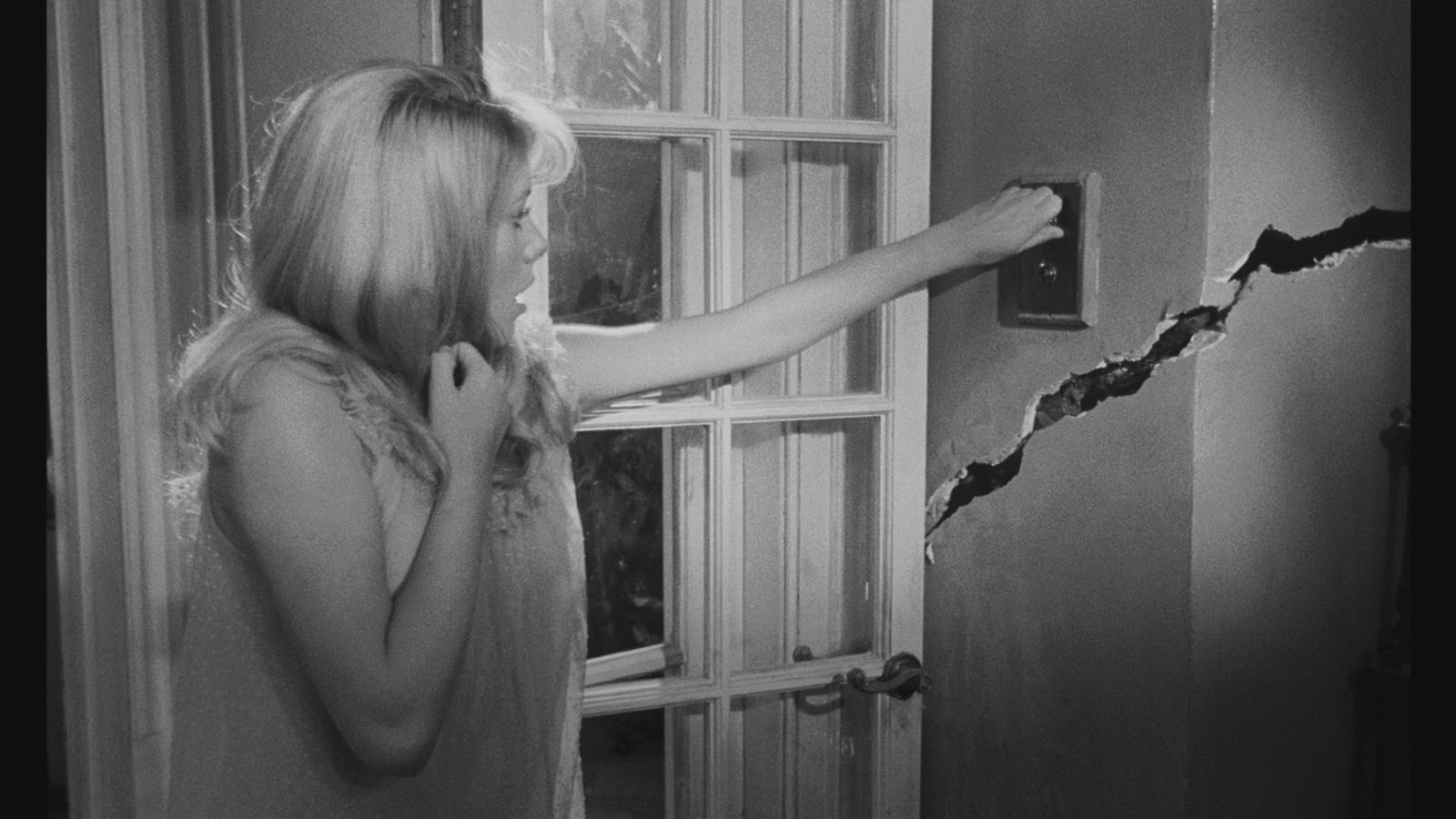
Roman Polanski’s first take on the horror genre tells the story of the descent into madness of a disturbed and beautiful young woman named Carol, played by Catherine Deneuve in one of her first main roles. As the other early works of the director, this movie is shot in a suggestive black and white.
The whole movie is about Carol’s interactions with a series of secondary characters. From the very first scenes of the movie it is made clear that something is wrong with her, judging from her behavior. She seems distracted, both while working and talking with people, she doesn’t care about what happens around her and seems to be disgusted by men and immune to their charm.
This apparent feeling of repulsion starts to develop into a paranoia when Carol’s sister leaves her alone in the apartment for a few days; she starts to imagine that there are men inside the house willing to assault and rape her. When a man she met earlier walks to her door, just trying to talk, the woman brutally attacks him in a frenzied state.
The delusions she suffers from are consistent with the diagnosis of paranoid schizophrenia, a subtype of schizophrenia. In this case her delusions are of the persecutory kind, as she believes that these imaginary men are going to harm her. Her visual hallucinations (she sees hands trying to grab her from the walls of the house), while not typical of a schizophrenic condition, are chosen by Polanski to give his movie its characteristic horror touch.
Overall, “Repulsion” is one of Polanski’s best efforts and shows a good depiction of what can happen to a schizophrenic patient during a severe psychotic episode.
4. Mr. Jones (1993)
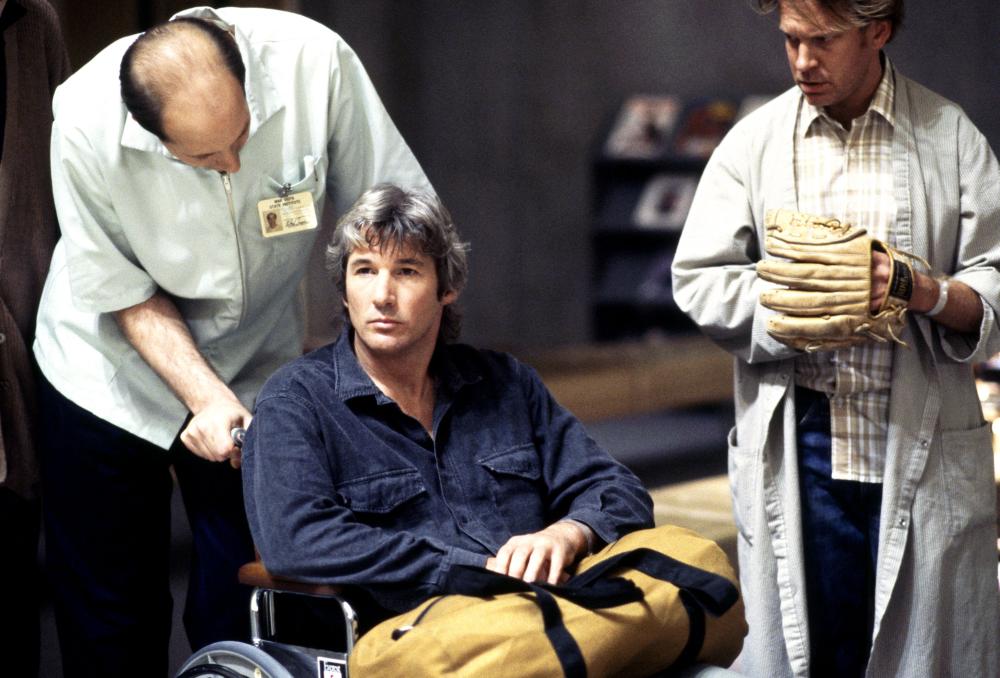
This is yet another romantic movie starring Richard Gere as the charming womanizer protagonist, with Lena Olin playing the role of the seduced, beautiful woman.
But the romantic story that is the subject of “Mr. Jones” goes further, because Gere’s character (known throughout the film as Mister Jones) is a bipolar patient and the woman he falls in love with is his psychiatrist.
The movie begins with Jones in an exalted state risking his life with a stunt, as he tries to “take off” from a roof. After he is put into an institution, where doctor Bowen (Olin) tries to convince him that his mental condition is serious and should be treated. Her diagnosis of Jones’ condition is bipolar disorder.
Gere’s interpretation of Jones as a bipolar patient is surely one of the most realistic in cinema. The symptoms he manifests, in the form of bizarre, eccentric and uninhibited behavior and, on the other hand, states of acute sadness and grief, perfectly correspond to the two typical phases of this disorder: one referred as a manic episode and the other as a depressive episode.
These opposite states of mood occur alternatively (hence the term bipolar), with a recurrent pattern that is accurately portrayed in this movie; Jones shifts through both states of excitement and euphoria (such as when he tries to hit on random women or put himself in embarrassing situations) and depressive ones (that lead him to think about grieving memories of his past and consider suicide).
5. As Good As It Gets (1997)
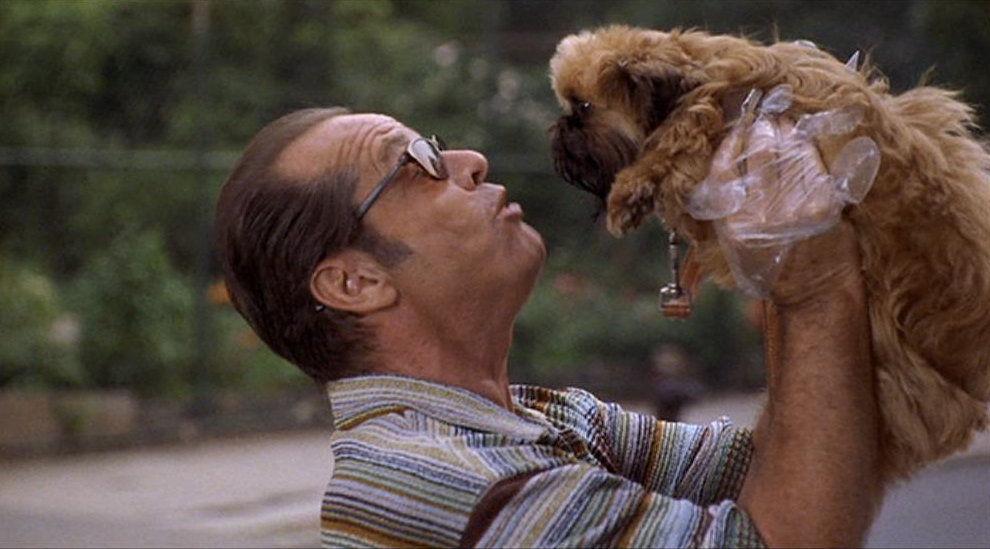
Jack Nicholson is known for playing the role of the madman in many different movies. Mostly he plays the part of the psychotic character; but in the movie we’re talking about, “As Good As It Gets”, he manages to realistically play the role of an obsessive-compulsive person.
The movie is a good example of a romantic comedy: the comedic side is aided by the great and hilarious interpretation of Nicholson, who plays the misanthropic novelist Melvin.
Melvin is the typical man everyone is supposed to hate: he’s loudly arrogant, consciously bad-mannered, generically annoyed by people surrounding him in public, and a convinced racist. He’s the stereotypical misanthrope, whose redeeming side relies on the strong affection he feels for the waitress Carol, apparently the only woman he doesn’t despise and that will succeed to “make him want to be a better man”, quoting his own words.
Nicholson’s great acting also offers us a really accurate representation of what an obsessive-compulsive patient has to go through in his everyday life. Particular attention is given to the compulsive aspect, which concerns a series of different repetitive behaviors and/or mental acts that are aimed to relieve the patient from a strong irrational stress.
The ill person, especially as an adult, also suffers when he eventually realizes that this ailment interferes with other aspects of his or her life, such as social relationships. As we see in the movie, Melvin decides that, in order to live a normal life with his lover, he has to take the prescribed medications to control the disorder.
6. Girl, Interrupted (1999)
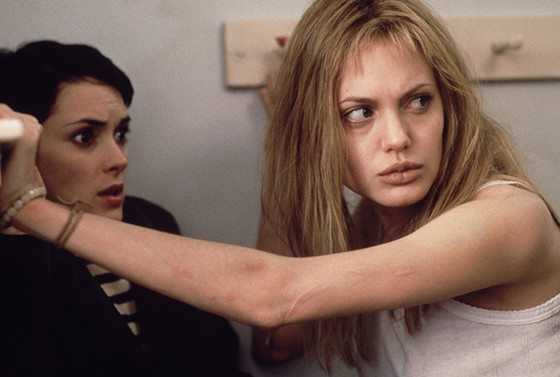
Adapted from the eponymous memoir of Susanna Kaysen, “Girl, Interrupted” well manages to describe the rhythms and medical procedures of a typical mental institution of the 60s, focusing in particular on the relationships between nurses and patients. The story is told from the perspective of the female protagonist, Susanna (played by Winona Ryder), a depressed young woman who, after a failed suicide attempt, is forced by her parents to check herself in a psychiatric hospital.
This film shows us different cases of mental illness, mostly personality disorders. Here are some examples: Susanna meets with a girl apparently suffering from bulimia nervosa (an eating disorder) named Daisy, who hides consumed food under her bed and daily consumes excessive doses of laxatives. She also befriends the charismatic and chaotic Lisa, a woman portrayed as a typical “sociopath”, which is the common term used to define a person affected by antisocial personality disorder.
Lisa indeed manifests all the main symptoms, like the failure to conform to social norms and laws, impulsivity, tendency to being aggressive, and lack of remorse, all of which are well portrayed in the movie (by Angelina Jolie, awarded with an Oscar for Best Supporting Actress).
The main character, Susanna, is instead diagnosed with borderline personality disorder. One of the typical symptoms of BPD, shown early in the film, is suicidal behavior, as well as sexual promiscuity, but the most recurring ones are excessive smoking and the chronic feeling of emptiness the young woman suffers from until the end of her hospitalization.
The movie itself it’s not a great effort and the director even added to the plot some events that are not told in the book (for the sake of the drama), but it manages to realistically show the mentioned mental disorders.
7. Analyze This (1999)
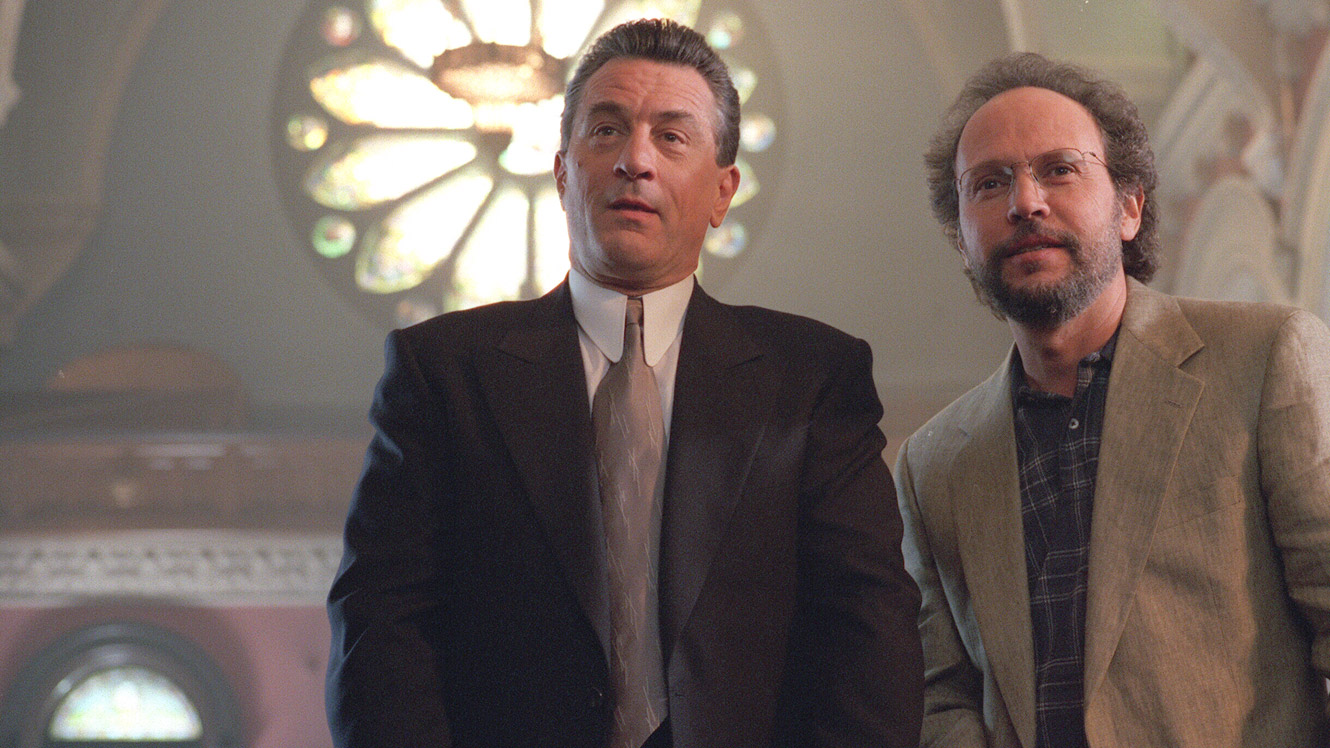
Harold Ramis is the mind behind one of the best mafia comedies ever made. Starring two great actors with great comedic potential, Robert De Niro and Billy Crystal, “Analyze This” is a hilarious comedy that manages to entertain by mixing the stereotypical lifestyle of an Italo-American mafia boss with the world of psychiatry.
Robert De Niro plays Paul Vitti, a powerful boss of Italian organized crime in the New York area. Vitti’s lifestyle keeps him always in the heat and his rank in the mafia makes him the object of much attention. The consequent amount of stress weighs upon him so much that he starts suffering from an anxiety disorder that makes him look fragile, a weakness that, in his perilous business, he can’t afford to show.
Vitti decides to secretly visit a psychiatrist, Ben Sobel. He initially refuses to help the infamous boss, but eventually he sees him as a challenging case and starts to feel some sympathy for him. So the doctor decides to help Vitti to deal with his painful past, the cause of his anxiety.
The movie focuses a lot on the link between doctor and patient, creating hilarious situations built around the fact that Sobel doesn’t know how to deal with such an important figure of organized crime, a strong-willed man who first asks him for help, then refuses to accept he is suffering from panic attacks.
This anxiety condition is shown during the first few minutes; Vitti suddenly starts sweating, he feels pressure in the chest and is short on air, seemingly choking. He runs to the hospital believing he’s having a heart attack, but he’s told that these physical sensations are not life-threatening; they’re just the symptoms of a panic attack.